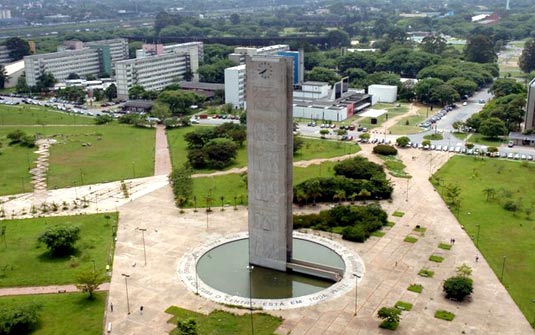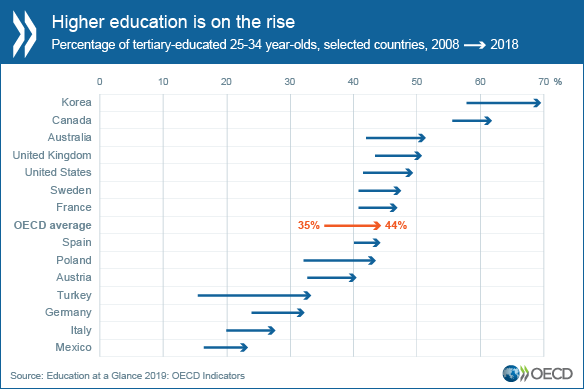RIO DE JANEIRO, BRAZIL – Brazil is among the five countries with the lowest rates of individuals with higher education among the 45 nations analyzed in a study released by the Organization for Economic Cooperation and Development (OECD) on Tuesday, September 10th.
The report “Education at a Glance”, which includes educational data from members and partners of the organization, shows that, amid funding cuts in public universities in the country, the Brazilian education system is facing many challenges.

According to the study, only 21 percent of Brazilians between the ages of 25 and 34 hold a higher education degree.
The percentage is well below the average of the countries that make up the OECD: 44 percent.
Other countries making up the list of nations with the lowest rate of access are: China, with 18 percent; Indonesia with 16 percent; and India with 14 percent – in the case of these three, however, the reference year for the data was not 2018. Ranking last is South Africa, where only 6 percent of the population in this age group have higher education.
Brazil holds the worst rate among Latin American countries with available data, lagging behind Mexico (23 percent), Costa Rica (28 percent), Colombia (29 percent), Chile (34 percent), and Argentina (40 percent).
The country with the highest rate of individuals with higher education degrees is South Korea, where 70 percent of the population aged 25-34 has reached the stage. Next is Russia, with 63 percent, and Canada, with 62 percent.
Many Brazilian Unable to Graduate
In addition, OECD data show that Brazil is also among the worst in terms of the rate of students who have entered higher education and are able to graduate.
The data show that 67 percent of students are unable to complete their degree within the expected time frame, on average, four or five years.
The index is higher than the average for countries with available data on completion, where 61 percent are in this situation.
The situation improves when considering those obtaining degrees seven or eight years after entry, when approximately half of the students finally manage to graduate, a level even lower than the average, where 67percent obtain the diploma after this period.
Among the other half of Brazilian students who failed to graduate, at least two-thirds have already dropped out of the educational system.
Although the data show the need to expand the country’s higher education, the challenge will not be easy, particularly in a context of contingency.
In May, the government announced a series of budget cuts for federal educational institutions. Resource constraints have led institutions to begin to report issues in their operations.
The Federal University of Rio de Janeiro (UFRJ), for instance, has suspended transport and communication services to maintain its activities.
At the same time, the reduction in the number of programs such as the Student Finance Fund (FIES) has reduced access to private institutions, which account for the largest share of enrollments in higher education in the country, unlike in most OECD countries, where less than a third of students are in these universities.


